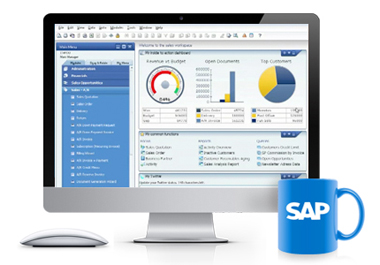Enterprise Resource Planning For Streamlining Small and Midsized Business Processes
An old bromide: “Those who fail to plan…plan to fail.” That maxim was popular for eons, but in recent years it is seldom mentioned. Why? Well, one of the reasons is that, not so long ago, small to mid-size business owners, CEOs, CFOs, and other professionals realized that Enterprise Resource Planning (“ERP”) software typically enhances productivity. Prior to that, ERP software was very expensive and required a large amount of (a) computing power as well as (b) computer storage space. Accordingly, many owners of small business enterprises didn’t consider ERP systems to be cost effective.
Currently, affordable ERP software serves multitudes of small to mid-sized businesses in the US. Its utilization typically leads to some changes in the way staff members conduct their work. Typically, the purveyor of the ERP system can provide guidance regarding adaptation to the changes in workflow, processes and practices. Usually, the types of services available to help adopt such changes are consulting, customization, and support. Implementation time depends on business size, number of modules, customization, the scope of process changes, and the readiness of the customer to take ownership for the project. Modular ERP systems can be implemented in stages. The time involved varies according to the scope of the project.
Usually, the adaptation of ERP typically entails revisions to existing business processes. Poor understanding of needed process changes before starting implementation is a main reason for project failure. Thus, it is very important that organizations thoroughly analyze their business processes before using ERP. This analysis can identify opportunities for fine tuning processes impacted by modernization. The adaptation planning should generate an assessment of the alignment of current processes with those provided by the ERP system. Research shows that these steps can reduce the risk of business process “mismatch”: linking current processes to the organization’s strategy; analyzing the effectiveness of each process; and, understanding existing automated solutions.
ERP implementation is considerably more difficult (and politically charged) in decentralized organizations, because they often have different processes, business rules, data semantics, authorization hierarchies and decision centers. This may require the migration of some business units before others, delaying implementation to work through the necessary changes for each unit, possibly reducing integration (e.g. linking via Master Data management) or customiziation of the system to meet specific needs. A potential disadvantage is that adopting “standard” processes can lead to a loss of competitive advantage. While this has happened within a small percentage of businesses, losses in one area are often offset by substantial gains in other areas, increasing overall competitive advantage.
Since 1983 Cornerstone Consulting has been providing state-of-the-art business software systems, as well as related technical support, to small and midsized manufacturing and wholesale distribution enterprises. With the expertise of Cornerstone’s highly-skilled programming staff and SAP’s ERP system for small and midsized businesses, SAP Business One, your enterprise can run better than ever before. Why do so many small and midsized companies rely on Cornerstone to help their organizations out-perform the local, national and/or international competition with ease? Simply stated, our level of experience is superior than the rest. To learn how easily your business can get “head and shoulders ahead of the competition” with an ERP solution, call Cornerstone Consulting at 813-321-1300.
Source: http://tinyurl.com/8yr9k


